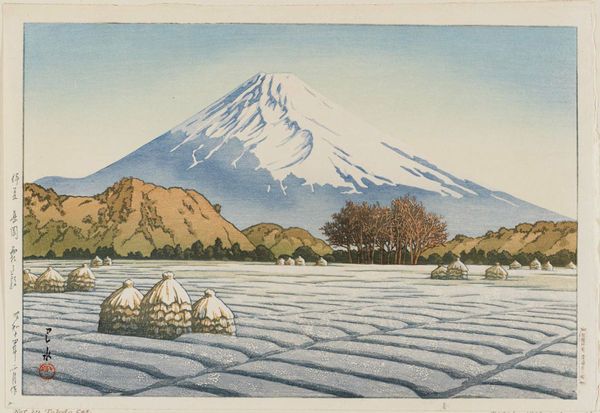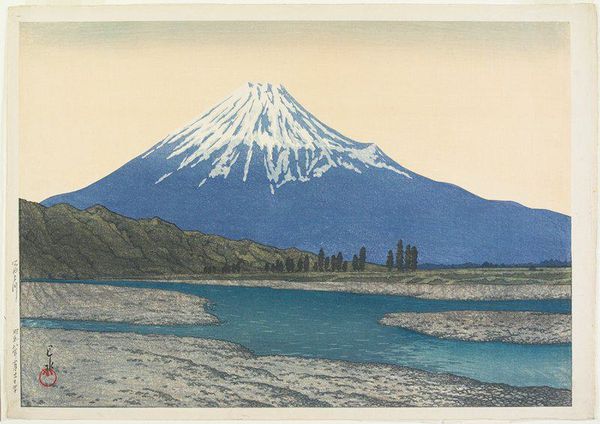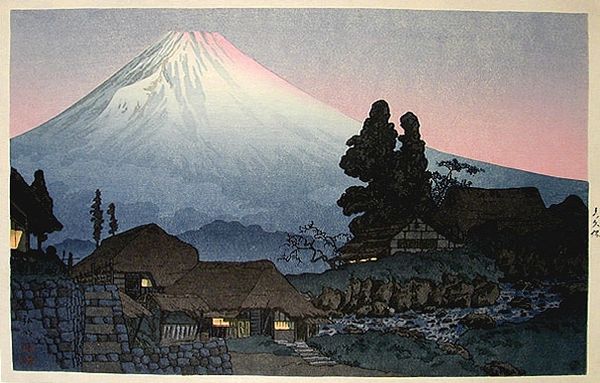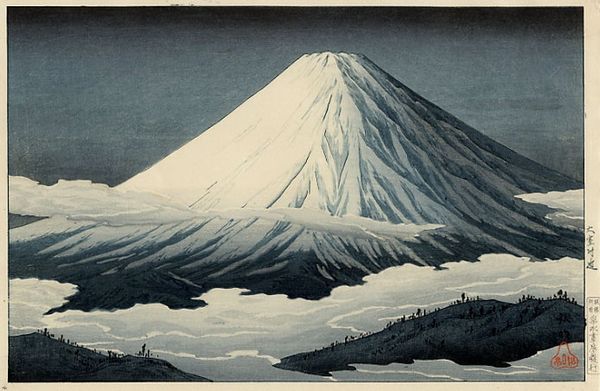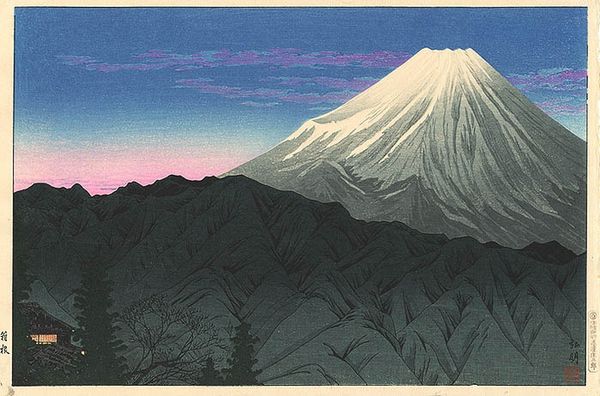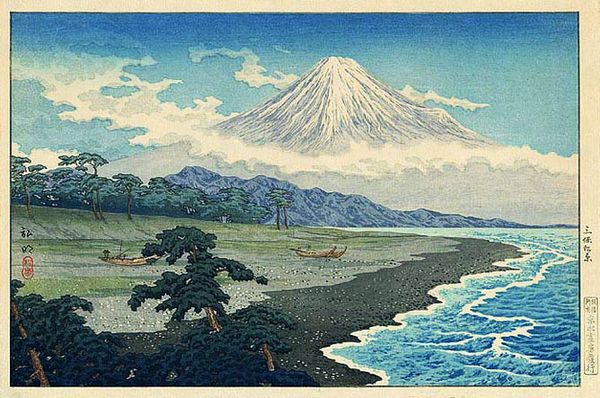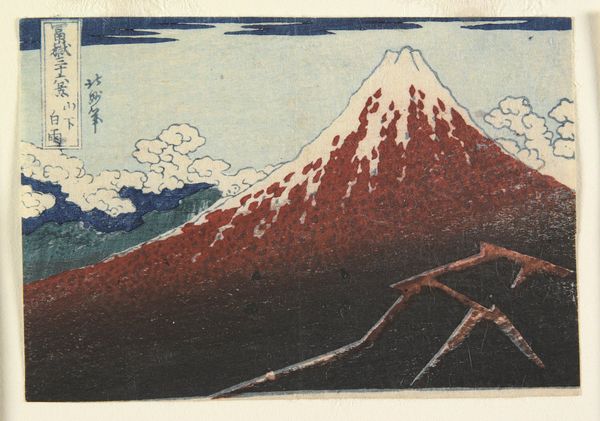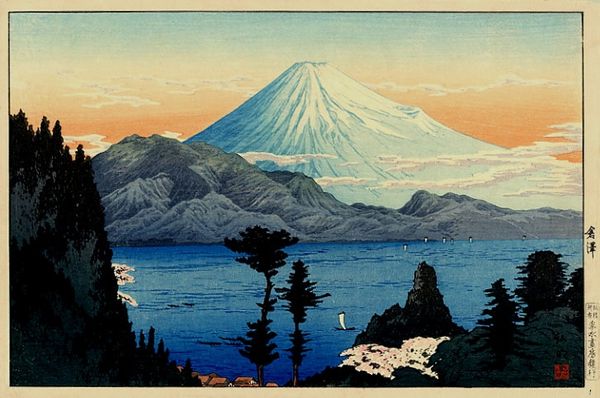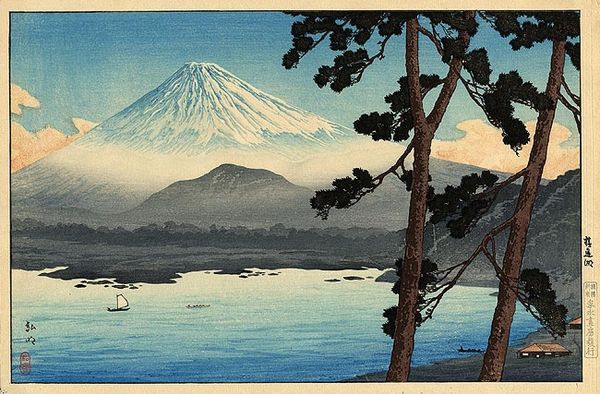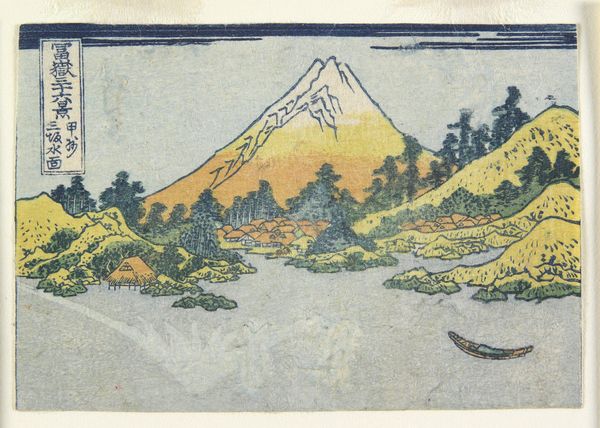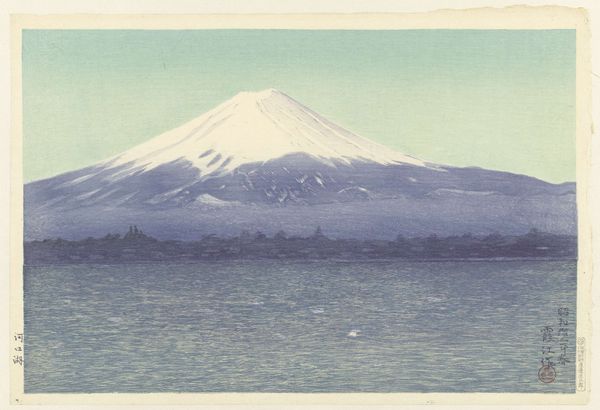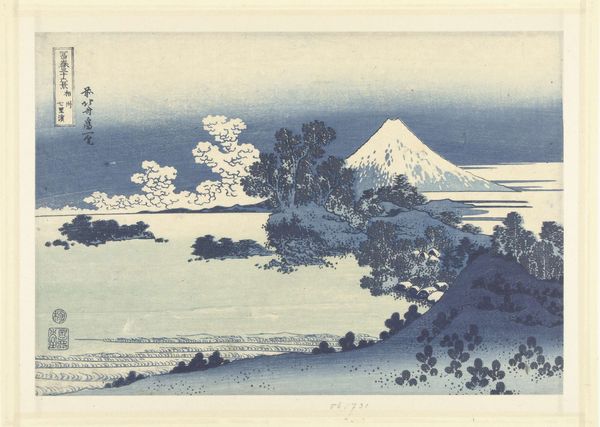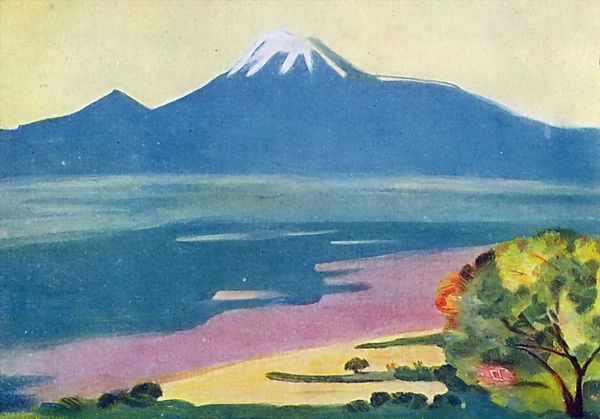
print, woodblock-print, wood
#
tree
#
boat
#
sky
#
ship
# print
#
asian-art
#
landscape
#
ukiyo-e
#
house
#
forest
#
woodblock-print
#
mountain
#
naive art
#
wood
#
building
Copyright: Toshi Yoshida,Fair Use
Curator: This serene vista is "Mt. Fuji from Ohito, Morning," a woodblock print by Toshi Yoshida. It's a beautiful example of 20th-century ukiyo-e. Editor: The overall impression is incredibly peaceful, even majestic. The soft pastels create a dreamy effect, particularly on the summit. It's idealized, almost like a postcard. Curator: Absolutely. Yoshida comes from a family with a rich printmaking history, so this piece fits into a larger narrative of landscape art being produced for tourist consumption as part of a nation branding project in the 20th Century. These landscapes reinforced ideas of a traditional and picturesque Japan to domestic and international audiences. Editor: That makes sense when viewing the mountain like that. What cultural associations would viewers bring to an image of Mount Fuji? The color alone suggests there’s significance to the pink-ish snow. Curator: Fuji is sacred in Japanese culture, an almost universally recognizable symbol. Its depiction transcends simple representation to embody the soul of Japan, which is tied directly into Buddhist and Shinto cosmology and practices, for many. Yoshida capitalizes on this inherent reverence, but his aesthetic choices – simplified forms, gentle colors – democratize the icon for popular consumption, removing religious connotations. Editor: I see it now! Even something like the vantage point, looking out over carefully cultivated fields…it speaks to the ideal of harmony between humanity and nature. The colors are indeed calming, like a blessing for a new day. Curator: Exactly, it’s skillfully walking a line. Nostalgic of pre-industrial life, but produced as part of modern image-making industries. Yoshida uses the woodblock medium itself, to participate and call back to previous images of Japan that were produced centuries before for similar aims of public distribution and viewership. Editor: Understanding the complex cultural background gives this seemingly straightforward landscape painting an entirely different weight. It reveals a nuanced dialogue between tradition, identity, and modernization in Japan, like a visual time capsule. Curator: Agreed. It is a prime example of how art objects operate as mirrors reflecting the societies that produce them, and participate in molding social values at the same time.
Comments
No comments
Be the first to comment and join the conversation on the ultimate creative platform.
